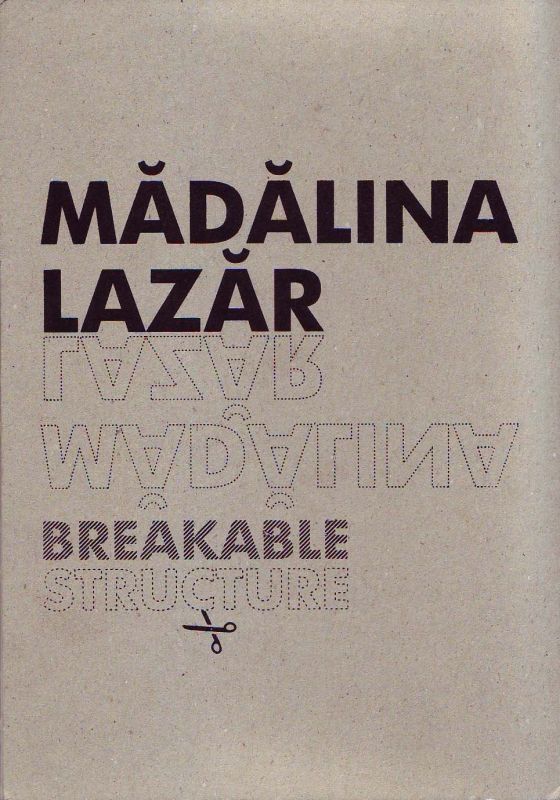
Hard Cover, English, Thread Stitching, 44 Pages, 2011
Breakable Structure
availability unknown, if interested please write an email
"Starting out from painting, Madalina Lazar reveals the valencies of collage as an alternative means of expression.
This is not abandonment of painting but a resolution of some mature and refined aesthetic and conceptual quests. Thus we emerge into a seemingly barren context with a well-controlled spaciousness, beyond ruptures and some specific elements of the human environment, since the author is interested in a kind of constructivist, suprematicist contextualization. A concern with the representation of absence remains a constant in this coherent route followed consistently in favor of three-dimensional geometry and composition. Whereas avant-garde debates were often rooted in political ideology of a fascist or Bolshevic dimension (depending on the cultural space concerned), Madalina Lazar leaves ideological discourse aside and instead touches upon nihilistic philisophies, contemporary with the Russian avant-garde. Her collages reveal traces of fragments of humanity, representing the absence which cut subtly, yet extremly harshly across the situation of the contemporary individual. Blasé, in a constant routine, fallen within the limits of his helplessness, the individual leaves his/her traces that are obviously determined by the boundaries of the space in which she/he lives, only preoccupied with survival and not with living. People play out their conventional social roles and do not know how to be different. In their subjective memory they remain unchanged. We see the human being institutionalized, absurd, ridiculous. Executed in selected media, the collages signal violent aspects without emplying an agressive decor. Nothingness is more frightening than presence. In the absence of a saving revelation and religious consciouness the nihilist becomes lost in the maze built by her/himself. The contemporary individual is nothing but his/her own victim. In these collages one sees no solution, hence there is no exist, and death is an end of the line that completes nothingness."
Olivia Nitis, curator, art critic
Language: englisch
